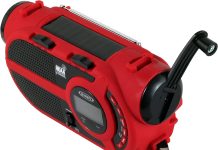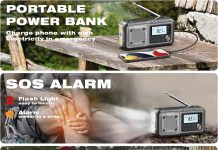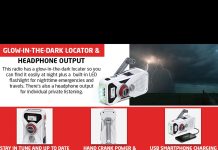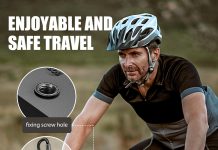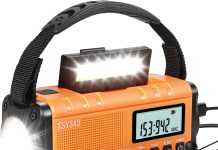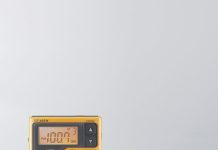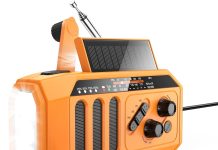If you’re someone who’s preparing for emergencies or stockpiling supplies, you might have heard about ham radios. But are these radios really beneficial for preppers? Ham radios, also known as amateur radios, can be a valuable asset in times of crisis. With their ability to operate when other communication methods fail, ham radios provide a lifeline for individuals and communities. They offer a way to stay connected, gather crucial information, and coordinate relief efforts. In this article, we’ll explore the advantages of ham radios for preppers, showcasing why they are an essential tool to consider in any survival plan.
Review contents
Advantages of Ham Radios for Preppers
Reliable Communication During Emergencies
When it comes to prepping for emergencies, reliable communication is crucial. Ham radios, also known as amateur radios, are excellent tools for ensuring communication in times of crisis. Unlike other communication methods that may rely on cellular networks or the internet, ham radios operate on radio frequencies, allowing you to stay connected even when traditional communication channels are compromised. With a ham radio, you can count on having a reliable means of communication when you need it most.
Long Range Communication
In emergency situations, it’s essential to have the ability to communicate over long distances. Ham radios offer impressive range capabilities, allowing you to reach far beyond the limitations of cell phones or walkie-talkies. With the right equipment and setup, you can communicate with other ham radio operators across cities, states, and even countries. This long-range communication capability becomes invaluable during disasters or when you need to coordinate with individuals outside your immediate area.
Independent of Infrastructure
One of the standout advantages of ham radios for preppers is their independence from infrastructure. Unlike traditional communication methods that rely on functioning cell towers or internet connectivity, ham radios operate independently. This means that even if the power grid goes down or cellular networks become overwhelmed during a crisis, your ham radio can still function, allowing you to stay in touch with others. This independence gives you peace of mind, knowing that you have a means of communication even in the most challenging circumstances.
Various Frequency Options
Ham radios provide a wide range of frequency options, allowing you to adapt your communication to different scenarios. The Amateur Radio Service (ARS) offers different bands, including VHF and UHF for local communication and HF for long-distance communication. Having access to various frequencies ensures that you can communicate effectively in different situations, such as coordinating with local authorities during an emergency or reaching out to fellow preppers in remote locations.
Potential for Encryption
Privacy and confidentiality are crucial considerations in any communication system, especially during emergencies. Ham radios have the potential for encryption, enabling you to secure your communications and prevent unauthorized access. By encrypting your transmissions, you can ensure that your messages remain private and protect sensitive information. However, it is important to balance security with legal considerations, as there are regulations surrounding encryption use in certain situations.
Excellent for Group Communication
In times of crisis, effective group communication is vital for coordination and support. Ham radios excel at facilitating group communication, allowing multiple operators to communicate simultaneously. Whether you are part of a prepper group or coordinating with local emergency responders, ham radios enable real-time communication, ensuring that everyone stays informed and connected. This ability to establish communication networks enhances safety and preparedness, fostering a sense of community and support among fellow preppers.
Considerations for Preppers
Licensing Requirements
To legally operate a ham radio, you must obtain an Amateur Radio License issued by the appropriate regulatory authority in your country. Licensing requirements typically involve passing an examination to demonstrate your understanding of radio operation and regulations. While obtaining a license may require some effort, it ensures that all operators have the necessary knowledge and skills to operate ham radios responsibly. Additionally, being licensed allows you to access a wider range of frequencies and modes of operation.
Learning Curve
For new preppers, learning to operate a ham radio may initially seem challenging. Ham radios have a learning curve, requiring some investment of time and effort to understand their functionalities and operational procedures. However, numerous resources, including online tutorials, books, and local ham radio clubs, can help beginners navigate this learning process. With patience and practice, you can become proficient in operating a ham radio and fully leverage its capabilities for emergency communication.
Equipment and Cost
Investing in the right equipment is essential for effective ham radio operation. While ham radios themselves can range in price, from affordable handheld models to more advanced base stations, additional equipment such as antennas, power supplies, and accessories may also be necessary. It’s important to consider your specific communication needs and budget when selecting equipment. Quality equipment ensures reliable communication and longevity, making it a worthwhile investment for preppers serious about emergency preparedness.
Power Source and Batteries
Power outages are common during emergencies, making it essential to have a reliable power source for your ham radio. Many ham radios can be powered by batteries, both rechargeable and disposable, allowing you to stay operational even without access to electricity. Preppers should consider investing in backup batteries or alternative power sources, such as solar panels or generators, to ensure a continuous power supply for their ham radios. Being proactive in power management will help you maintain communication when it matters most.
Maintenance and Repair
Like any electronic device, ham radios require regular maintenance to ensure optimal performance. Routine tasks such as cleaning, inspecting cables, and checking connections help prevent issues and extend the lifespan of your equipment. In the event of a malfunction or damage, having basic troubleshooting skills can also come in handy. Preppers should invest time in learning how to perform DIY repairs or locate local technical support for more complex issues. Being able to maintain and repair your ham radio equipment will ensure its reliability and functionality in times of need.
Understanding Ham Radios
What are Ham Radios?
Ham radios, also known as amateur radios, are two-way radios that operate on specific radio frequencies designated for non-commercial use. They are primarily used for personal and emergency communication, experimentation, and promoting technical expertise in radio communications. Unlike other radio services, such as Citizens Band (CB) radios, ham radio operators are licensed and must adhere to specific regulations and operating procedures.
Amateur Radio Service (ARS)
The Amateur Radio Service (ARS) is a designated radio service for non-commercial use. It allows licensed individuals to use specific frequency bands and modes of operation to communicate with other licensed operators, both locally and globally. The ARS promotes self-training, intercommunication, and experimentation in the field of radio communications. Ham radio operators, or “hams,” enjoy the benefits of a diverse and supportive community of fellow enthusiasts.
Types of Ham Radios
Ham radios come in various forms, catering to different communication needs and preferences. Handheld transceivers, also known as HTs, are portable and convenient for on-the-go communication. Mobile transceivers are designed for use in vehicles, offering more power and range. Base stations provide higher power output and enhanced features, often with the ability to connect to external antennas for improved performance. Choosing the right type of ham radio depends on factors such as intended use, portability, and power requirements.
Fundamental Components
Ham radios consist of several fundamental components that work together to facilitate communication. The transceiver is the central component that combines a radio transmitter and receiver. It allows users to both transmit and receive signals, enabling two-way communication. Antennas capture and radiate radio signals, acting as the interface between the radio and the surrounding environment. Power supplies and batteries provide the necessary electrical energy to operate the radio, ensuring continuous communication.
Antennas and Their Importance
Antennas are a vital component of any ham radio setup as they play a crucial role in transmitting and receiving signals. Different types of antennas exist, each with its advantages and considerations. VHF and UHF antennas are suitable for short-range communication and are commonly used for local communication within a prepper group or community. HF antennas, on the other hand, are designed for long-distance communication and can reach across continents. Antennas should be carefully chosen and properly installed to optimize signal strength and range.
Reliable Communication During Emergencies
Ham Radios as Disaster Communication Tools
In times of disaster or emergency, reliable communication is essential for coordinating relief efforts, seeking assistance, and providing critical updates. Ham radios have a proven track record as reliable communication tools during emergencies. Their independent infrastructure, long-range capabilities, and ability to communicate with local authorities make them invaluable assets in disaster-stricken areas. Whether it’s connecting with first responders or providing aid to those in need, ham radios enable effective communication when it matters most.
Ability to Access Local Authorities
During emergencies, communication with local authorities can be a lifeline for affected communities. Ham radios provide the means to establish direct communication channels with emergency services, law enforcement, and other relevant agencies. By having a ham radio, preppers gain the ability to relay crucial information, request assistance, and receive updates on the situation. This direct line of communication with local authorities enhances both the efficiency and accuracy of emergency response efforts.
Assisting in Search and Rescue Operations
In situations where lives are at stake, such as search and rescue operations, every second counts. Ham radios enable preppers to actively participate in these efforts by providing real-time communication channels. By coordinating with rescue teams, reporting findings, and relaying vital information, ham radio operators can play a crucial role in locating and assisting survivors. The ability to communicate with other volunteers, share updates, and request additional resources ensures a coordinated and efficient search and rescue operation.
Establishing Emergency Networks
During emergencies, traditional communication networks may become overloaded or unavailable. Ham radios can bridge this communication gap by establishing emergency networks. Preppers equipped with ham radios can form local communication networks, connecting their communities and sharing information, resources, and assistance. These networks not only enhance overall preparedness but also create a sense of community and support during challenging times. By cultivating strong emergency networks, preppers can rely on one another for critical updates and aid.
Community Preparedness and Support
Ham radios promote community preparedness, as they require coordination, training, and network building among fellow preppers. By actively participating in the ham radio community, preppers can develop valuable relationships and establish a support system. Sharing knowledge, conducting drills and exercises, and regularly communicating within the prepper community help foster a sense of preparedness and ensure that everyone is equipped to handle emergencies effectively.
Long Range Communication
VHF and UHF Bands for Local Communication
Ham radios operate on various frequency bands, each offering distinct advantages. Very High Frequency (VHF) and Ultra-High Frequency (UHF) bands are typically used for local communication within a limited geographical area. These bands provide reliable coverage for urban and suburban environments, making them ideal for preppers coordinating within their community or group. VHF and UHF radios often have compact and portable designs, allowing for easy transportation during emergencies.
HF Bands for Long-Distance Communication
When it comes to long-range communication, High Frequency (HF) bands are the go-to option. HF signals can travel much farther than VHF or UHF signals, enabling communication over hundreds or even thousands of miles. This long-distance reach is made possible through a phenomenon called skywave propagation, where HF signals bounce off the Earth’s ionosphere and return to the ground at a different location. Preppers utilizing HF bands can establish communication with fellow operators outside their immediate area, ensuring broad coverage and valuable information exchange.
Skywave Propagation and Its Benefits
Skywave propagation, unique to HF bands, offers several benefits for long-range communication. By bouncing off the ionosphere, HF signals can cover vast distances without relying on infrastructure or direct line-of-sight communication. This makes skywave propagation particularly useful in disaster scenarios when traditional communication infrastructure may be compromised. By understanding and leveraging skywave propagation, preppers can establish reliable long-distance communication links even when other methods are inaccessible.
Utilizing Repeaters for Extending Range
Repeaters play a significant role in extending the range of ham radios, particularly in areas with challenging terrain or limited line-of-sight communication. Repeaters are stations equipped with high-power transmitters and large antennas that receive and retransmit signals across a wider area. By utilizing repeaters strategically, preppers can overcome geographical limitations and extend their communication range. Repeaters are often installed on elevated locations such as mountains or tall buildings, maximizing their coverage and effectiveness.
Improving Communication Range with Antenna Systems
In addition to repeaters, optimizing antenna systems can significantly enhance the communication range of ham radios. Antennas are critical components that capture and radiate radio signals. By investing in high-quality antennas, preppers can maximize signal strength and extend their communication reach. Antenna height, antenna type, and proper placement all play pivotal roles in optimizing communication range. Being knowledgeable about different antenna options and understanding their importance empowers preppers to establish reliable and long-reaching communication channels.
Independent of Infrastructure
Ham Radios as a Standalone Communication System
During emergencies, the collapse of traditional communication infrastructure can be a significant challenge. Ham radios, being self-contained communication systems, operate independently of infrastructure. This means that even if power grids fail or cellular networks go down, ham radios can continue to function. This independence ensures that preppers can maintain communication when other forms of communication become unreliable or inaccessible. By relying on their own equipment and frequencies, preppers can remain connected and informed, enhancing their overall emergency preparedness.
Operating During Power Outages
Power outages are common during disasters, making it critical to have a dependable means of communication that doesn’t rely on electricity. Many ham radios are designed to operate on battery power, both rechargeable and disposable. By ensuring you have enough backup batteries and a reliable charging method, such as solar panels or generators, you can continue to use your ham radio during power outages. Being prepared for extended periods without electricity guarantees that your communication remains uninterrupted when you need it most.
Being Prepared for Grid Failures
Large-scale disasters or grid failures can have long-lasting impacts on infrastructure, including communication networks. Ham radios, with their independent operation, become invaluable in such scenarios. By anticipating and preparing for grid failures, preppers can ensure they have the necessary resources, such as fuel or alternative power sources, to keep their ham radios operational. Being self-sufficient in terms of power supply enhances your overall emergency readiness and ensures continuous communication capabilities.
No Reliance on Cellular Networks
In emergency situations, cellular networks can quickly become overwhelmed or simply fail due to high call volumes. Ham radios, on the other hand, are not reliant on these networks. They utilize radio frequencies on the spectrum that are separate from those used by cell phones and are less susceptible to congestion. By using ham radios, preppers can sidestep potential network congestion issues and still have a reliable means of communication, even when everyone else is struggling to get a signal.
Usefulness in Remote Locations
For preppers residing in remote or isolated areas, traditional communication methods may be limited or unavailable. Ham radios, with their long-range capabilities and independence from infrastructure, offer a lifeline in such situations. Whether it’s for staying connected within the community or reaching out to emergency services, ham radios provide a reliable communication option that transcends geographical barriers. The ability to establish communication from even the most remote locations ensures that preppers are never isolated when emergencies strike.
Various Frequency Options
Different Operating Frequency Bands
Ham radios offer a wide selection of operating frequency bands, each with its advantages and applications. These bands span a range of frequencies, from VHF and UHF for local communication to HF for long-range communication. Within these bands are specific frequencies designated for particular modes of operation, such as voice, Morse code, or digital data transmission. Having access to different frequency bands allows preppers to adapt their communication to varying scenarios, ensuring optimal performance and coverage.
Advantages of Using Multiple Bands
Utilizing multiple frequency bands provides several advantages for preppers. Each band offers different propagation characteristics, coverage areas, and interference considerations. By operating on multiple bands, preppers can take advantage of the strengths of each band, depending on their communication needs. For example, VHF/UHF bands excel in line-of-sight communication, while HF bands offer long-distance coverage. Having the flexibility to switch between bands empowers preppers to adapt to changing environmental conditions and maximize their communication range.
Exploring Voice and Data Modes
Ham radios allow for various modes of communication, including voice and data transmission. Voice communication is the most common mode and enables real-time, person-to-person communication. Data modes, on the other hand, facilitate the exchange of digital information, such as email, text messages, or weather updates. Depending on the situation, preppers can choose the appropriate mode to convey their messages effectively. Having access to both voice and data modes broadens the possibilities for communication and ensures information exchange in diverse scenarios.
Adapting to Varying Environmental Conditions
Environmental conditions can significantly impact radio communication. Factors such as terrain, weather, and interference sources can affect signal strength and range. Preppers relying on ham radios need to be adaptable to these varying conditions. For example, while VHF and UHF bands may be suitable for communication in urban areas, they may encounter limitations in mountainous regions or dense foliage. By understanding the characteristics of different frequency bands and environmental factors, preppers can make informed choices about their communication methods, maximizing their effectiveness.
Flexibility in Adjusting Communication Range
Ham radios provide flexibility in adjusting communication range to match specific requirements. Operators can control factors such as transmit power, antenna type, and antenna height to modulate signal strength and coverage. When communicating within a small area, reducing transmit power and utilizing a localized antenna setup can conserve battery life and minimize interference. Conversely, when attempting long-range communication, increasing power output and utilizing higher-gain antennas can extend the communication range. This flexibility allows preppers to fine-tune their communications and ensure optimal performance in different scenarios.
Potential for Encryption
Securing Communications with Encryption
Privacy and confidentiality are paramount when it comes to sensitive communication, especially during emergencies. Ham radios have the potential for encryption, offering a layer of security for communications. Encryption scrambles messages using cryptographic algorithms, making them unintelligible to unauthorized listeners. By enabling encryption on their ham radios, preppers can ensure that their transmissions remain private and protected from interception.
Ensuring Privacy and Confidentiality
In emergency situations, privacy and confidentiality become even more critical. Ham radios with encryption capabilities offer preppers the means to maintain the privacy of their communication. Whether discussing sensitive information, coordinating confidential operations, or simply maintaining personal privacy, encryption prevents unauthorized individuals from listening in on conversations. By encrypting their transmissions, preppers can have peace of mind knowing that their communication remains secure and confidential.
Digital Encryption Techniques
Digital encryption techniques are commonly employed to secure radio communications. These techniques use cryptographic algorithms to encode messages into unreadable formats. The use of encryption keys ensures that only authorized parties can decipher the messages. Digital encryption techniques offer robust security and can safeguard information transmitted via ham radios. However, it’s essential to stay informed about the latest encryption protocols and ensure compliance with legal regulations regarding encryption use in your jurisdiction.
Balancing Security and Legal Considerations
While encryption can provide security for ham radio communications, it’s important to balance this with legal considerations. The use of encryption, particularly strong encryption methods, may be subject to legal restrictions in some countries. Preppers should familiarize themselves with the regulations governing the use of encryption and ensure compliance to avoid any legal issues. By striking a balance between security and legal considerations, preppers can use encryption as a tool to protect their communication while remaining within the bounds of the law.
Limitations and Regulations
Despite its value in securing communication, encryption has certain limitations and regulations. Operational limitations may include the need for both transmitting and receiving stations to have compatible encryption capabilities. Additionally, regulations may govern the use of encryption during emergencies, for national security purposes, or in other specific contexts. Preppers should familiarize themselves with these limitations and regulations to ensure compliance and understand any potential constraints on their use of encrypted communications.
Excellent for Group Communication
Ham Radios as a Tool for Team Coordination
Effective team coordination is crucial during emergencies, especially for preppers working together to deal with challenges. Ham radios offer an excellent means of communication for teams, allowing real-time conversation and instant coordination. Preppers can use their ham radios to relay information, assign tasks, and provide updates, ensuring a cohesive and organized response to emergencies. By utilizing ham radios as a tool for team coordination, preppers can work together efficiently, maximizing their collective efforts.
Benefits of Real-time Communication
Real-time communication is invaluable when it comes to emergency situations. Ham radios provide preppers with the ability to communicate instantly, enabling timely decision-making and response. In high-pressure scenarios, where seconds count, real-time communication can be a lifesaver. Whether it’s coordinating search and rescue operations or providing immediate medical assistance, the ability to convey information in real-time ensures quick and effective actions, increasing overall emergency response efficiency.
Establishing Communication Networks
Ham radios have the capability to establish communication networks, connecting multiple operators within a localized area. These networks facilitate constant information flow and coordination, ensuring everyone stays informed and connected. In emergencies, such networks become vital for sharing critical updates, distributing resources, and providing emotional support. By actively building and participating in communication networks, preppers can strengthen their communities and foster a sense of solidarity and support during challenging times.
Enhancing Safety and Preparedness
One of the key goals of prepping is to enhance safety and preparedness for emergencies. By utilizing ham radios for group communication, preppers can greatly contribute to achieving this goal. Effective communication within a group ensures that everyone remains aware of the situation, potential risks, and necessary precautions. By staying connected, providing updates, and sharing expertise, preppers enhance their collective preparedness, making them better equipped to handle emergencies and protect their safety.
Supporting Information Sharing
Information sharing plays a crucial role in emergency situations. Ham radios enable preppers to share vital information, such as weather updates, road conditions, or resource availability. This sharing of information helps everyone make informed decisions and take appropriate actions. By utilizing ham radios for group communication, preppers can quickly disseminate information within their community, ensuring that everyone has the necessary information to respond effectively to emergencies.
Maintenance and Repair
Routine Maintenance Tasks
Performing routine maintenance tasks on your ham radios is essential for ensuring optimal performance and longevity. These tasks may include regular inspections, cleaning of contacts, and overall equipment checks. By dedicating time to regular maintenance, you can identify and address minor issues early on, preventing potential major problems in the future. Preppers should establish a maintenance schedule and follow manufacturer recommendations to keep their ham radios in peak condition.
Ensuring Radio Performance
Regular maintenance goes hand in hand with ensuring radio performance. By keeping your ham radio clean, inspecting cables and connectors, and checking power sources, you can maintain the performance levels of your equipment. This includes monitoring signal strength, clarity of transmission, and sensitivity of reception. By being proactive in maintaining your ham radio’s performance, you can depend on it to function reliably during emergencies.
Troubleshooting Common Issues
Despite regular maintenance, ham radios may encounter common issues that require troubleshooting. These issues can range from poor reception to intermittent signal transmission. Preppers should familiarize themselves with troubleshooting techniques, such as checking connections, adjusting antenna placement, or resetting the radio. The ability to quickly identify and resolve common issues ensures that your ham radio remains operational and efficient during emergencies.
Finding Local Technical Support
In some cases, technical issues may require professional assistance. It’s essential for preppers to locate local technical support for their ham radios. This can include finding reputable retailers, repair centers, or certified technicians who specialize in ham radio equipment. Establishing relationships with local technical support providers ensures that you have access to expert assistance when needed, minimizing downtime and maximizing the lifespan of your ham radio.
Building DIY Repair Skills
As a prepper, it’s valuable to acquire basic DIY repair skills for your ham radios. While some issues may require professional attention, being able to troubleshoot and resolve minor problems can be advantageous. Preppers can explore resources such as online tutorials, books, or joining local ham radio clubs to learn basic repair skills. Having DIY repair abilities increases self-sufficiency, reduces reliance on external support, and allows for quicker resolution of minor technical issues.
In conclusion, ham radios offer numerous advantages for preppers in terms of reliable communication during emergencies, long-range capabilities, independence from infrastructure, various frequency options, potential for encryption, and excellent group communication capabilities. However, preppers should consider licensing requirements, the learning curve, equipment and cost, power source and batteries, as well as maintenance and repair aspects. By familiarizing themselves with ham radios, preppers can make informed decisions and enhance their emergency preparedness with this essential communication tool. Whether it’s staying connected with local authorities, establishing long-distance communication, maintaining independence from infrastructure, securing communications, fostering group coordination, or ensuring proper maintenance, ham radios provide the necessary features for effective emergency communication.


